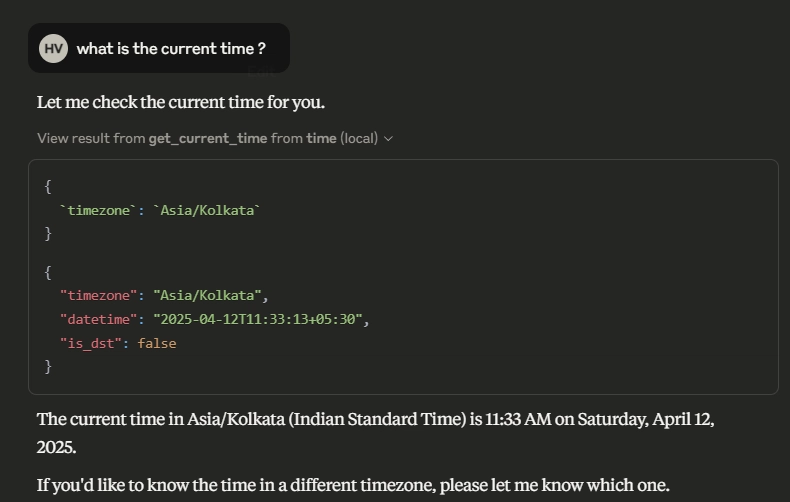Scaling Background Jobs With BullMQ and Redis in Node.js
Scaling Background Jobs With BullMQ and Redis in Node.js In Node.js applications, handling time-consuming tasks like sending emails, processing images, or interacting with third-party APIs can be offloaded to background jobs. BullMQ, backed by Redis, is a modern and performant queueing solution perfect for production-scale applications. Why Use BullMQ? BullMQ is a Node.js job queue built on top of Redis. It's the successor to Bull, with a modular architecture and support for robust job management, repeatable jobs, rate-limiting, and more. Step 1: Install Dependencies First, add BullMQ and Redis to your project: npm install bullmq ioredis Step 2: Set Up the Queue Create a queue instance using BullMQ: // queue.js const { Queue } = require('bullmq'); const connection = { host: 'localhost', port: 6379 }; const emailQueue = new Queue('emailQueue', { connection }); module.exports = emailQueue; Step 3: Add Jobs to the Queue You can enqueue jobs like this: // addJob.js const emailQueue = require('./queue'); emailQueue.add('sendWelcomeEmail', { to: 'user@example.com', subject: 'Welcome!', body: 'Thanks for joining us!' }); Step 4: Process Jobs Now create a worker to handle job processing: // worker.js const { Worker } = require('bullmq'); const connection = { host: 'localhost', port: 6379 }; const worker = new Worker('emailQueue', async job => { const { to, subject, body } = job.data; console.log(`Sending email to ${to} with subject "${subject}"`); // simulate email sending }, { connection }); worker.on('completed', job => { console.log(`Job ${job.id} completed`); }); Step 5: Monitor With Bull Board (Optional) Use bull-board to monitor and manage your queues via a web UI: npm install @bull-board/api @bull-board/express // monitor.js const express = require('express'); const { createBullBoard } = require('@bull-board/api'); const { BullMQAdapter } = require('@bull-board/api/bullMQAdapter'); const { ExpressAdapter } = require('@bull-board/express'); const emailQueue = require('./queue'); const serverAdapter = new ExpressAdapter(); const app = express(); createBullBoard({ queues: [new BullMQAdapter(emailQueue)], serverAdapter, }); serverAdapter.setBasePath('/admin/queues'); app.use('/admin/queues', serverAdapter.getRouter()); app.listen(3000, () => console.log('Dashboard running at localhost:3000')); Conclusion With BullMQ and Redis, you can scale job processing efficiently and reliably in Node.js. It’s a modern solution for asynchronous workflows, built for performance and flexibility. If this post helped you, consider supporting me: buymeacoffee.com/hexshift

Scaling Background Jobs With BullMQ and Redis in Node.js
In Node.js applications, handling time-consuming tasks like sending emails, processing images, or interacting with third-party APIs can be offloaded to background jobs. BullMQ, backed by Redis, is a modern and performant queueing solution perfect for production-scale applications.
Why Use BullMQ?
BullMQ is a Node.js job queue built on top of Redis. It's the successor to Bull, with a modular architecture and support for robust job management, repeatable jobs, rate-limiting, and more.
Step 1: Install Dependencies
First, add BullMQ and Redis to your project:
npm install bullmq ioredisStep 2: Set Up the Queue
Create a queue instance using BullMQ:
// queue.js
const { Queue } = require('bullmq');
const connection = { host: 'localhost', port: 6379 };
const emailQueue = new Queue('emailQueue', { connection });
module.exports = emailQueue;Step 3: Add Jobs to the Queue
You can enqueue jobs like this:
// addJob.js
const emailQueue = require('./queue');
emailQueue.add('sendWelcomeEmail', {
to: 'user@example.com',
subject: 'Welcome!',
body: 'Thanks for joining us!'
});Step 4: Process Jobs
Now create a worker to handle job processing:
// worker.js
const { Worker } = require('bullmq');
const connection = { host: 'localhost', port: 6379 };
const worker = new Worker('emailQueue', async job => {
const { to, subject, body } = job.data;
console.log(`Sending email to ${to} with subject "${subject}"`);
// simulate email sending
}, { connection });
worker.on('completed', job => {
console.log(`Job ${job.id} completed`);
});Step 5: Monitor With Bull Board (Optional)
Use bull-board to monitor and manage your queues via a web UI:
npm install @bull-board/api @bull-board/express// monitor.js
const express = require('express');
const { createBullBoard } = require('@bull-board/api');
const { BullMQAdapter } = require('@bull-board/api/bullMQAdapter');
const { ExpressAdapter } = require('@bull-board/express');
const emailQueue = require('./queue');
const serverAdapter = new ExpressAdapter();
const app = express();
createBullBoard({
queues: [new BullMQAdapter(emailQueue)],
serverAdapter,
});
serverAdapter.setBasePath('/admin/queues');
app.use('/admin/queues', serverAdapter.getRouter());
app.listen(3000, () => console.log('Dashboard running at localhost:3000'));Conclusion
With BullMQ and Redis, you can scale job processing efficiently and reliably in Node.js. It’s a modern solution for asynchronous workflows, built for performance and flexibility.
If this post helped you, consider supporting me: buymeacoffee.com/hexshift




























![[Webinar] AI Is Already Inside Your SaaS Stack — Learn How to Prevent the Next Silent Breach](https://blogger.googleusercontent.com/img/b/R29vZ2xl/AVvXsEiOWn65wd33dg2uO99NrtKbpYLfcepwOLidQDMls0HXKlA91k6HURluRA4WXgJRAZldEe1VReMQZyyYt1PgnoAn5JPpILsWlXIzmrBSs_TBoyPwO7hZrWouBg2-O3mdeoeSGY-l9_bsZB7vbpKjTSvG93zNytjxgTaMPqo9iq9Z5pGa05CJOs9uXpwHFT4/s1600/ai-cyber.jpg?#)














































































































































![[The AI Show Episode 144]: ChatGPT’s New Memory, Shopify CEO’s Leaked “AI First” Memo, Google Cloud Next Releases, o3 and o4-mini Coming Soon & Llama 4’s Rocky Launch](https://www.marketingaiinstitute.com/hubfs/ep%20144%20cover.png)





































































































































































































![Rogue Company Elite tier list of best characters [April 2025]](https://media.pocketgamer.com/artwork/na-33136-1657102075/rogue-company-ios-android-tier-cover.jpg?#)







































































_Andreas_Prott_Alamy.jpg?width=1280&auto=webp&quality=80&disable=upscale#)





































































































![Apple Watch Series 10 Back On Sale for $299! [Lowest Price Ever]](https://www.iclarified.com/images/news/96657/96657/96657-640.jpg)
![EU Postpones Apple App Store Fines Amid Tariff Negotiations [Report]](https://www.iclarified.com/images/news/97068/97068/97068-640.jpg)
![Apple Slips to Fifth in China's Smartphone Market with 9% Decline [Report]](https://www.iclarified.com/images/news/97065/97065/97065-640.jpg)



































































































































